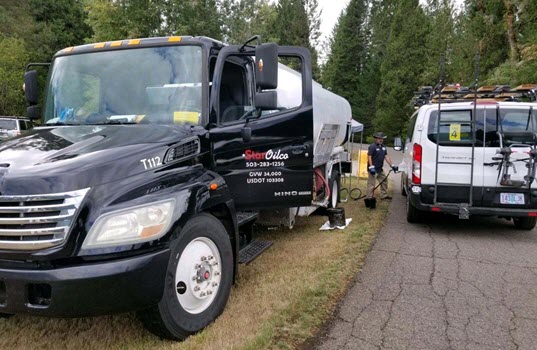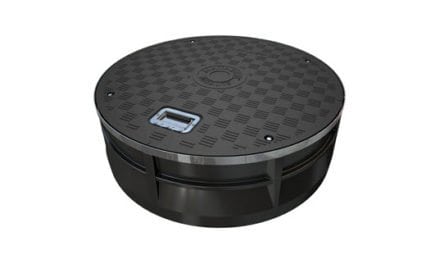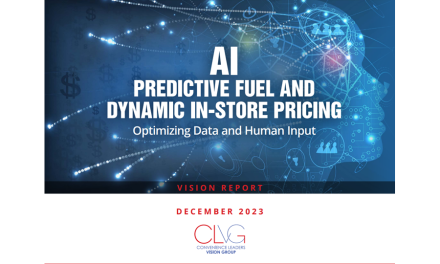By Keith Reid
We hear a lot about biodiesel. As a reminder, biodiesel is a renewable fuel made from lipids, including vegetable oils (soybean, for example) and animal fats. The process is a chemical reaction between these lipids and alcohol. The fuel is broadly compatible with petroleum diesel—with minor handling differences—and is typically blended in the 2% (B2) to 20% (B20) range. There were 1.8 billion gallons of biodiesel produced in 2018.
We don’t hear nearly as much about renewable diesel. The feedstocks are similar, though renewable diesel tends to use waste sources. There are two main production processes, Fischer-Tropsch and Hydrogenation, that are similar to petroleum fuel production. Renewable diesel is a drop-in product for petroleum diesel that can further be blended with petroleum diesel and biodiesel. It is considered to be “cleaner” than either product, both operationally and where carbon emissions are concerned (especially compared to petroleum biodiesel).
Renewable diesel is more expensive than either petroleum diesel or biodiesel. From a supply standpoint, in 2018 there were four commercial renewable diesel plants with a combined capacity of 356 million gallons and another 688 million gallons of capacity scheduled to come online in the near future. Renewable Energy Group and Neste are the major U.S. suppliers of the fuel. It can be used at 100% (R100) or any blend below that level.
The price challenges with renewable diesel have tended to make it a niche product for areas where environmental performance (enforced by government regulation) is a high priority, such as California and the Northwest.
Star Oilco, a marketing operation based in Portland, is one operation that is promoting and distributing renewable diesel to its customers. Star Oilco is a moderate-sized operation focused on commercial fueling that distributes bulk diesel and biodiesel and operates card locks and wet hosing. The company’s president, Mark Fitz, provided FMN with a FAQ on the product, which was expanded as part of a separate interview. The company will also be profiled in next week’s newsletter.
FMN: How much does renewable diesel cost?
Fitz: That changes regularly, but it has consistently been trending between the same cost and over a $1-a-gallon higher than petroleum diesel, depending on the state you buy renewable diesel in. This is driven by carbon intensity-based financial incentives.
The highest value markets for low CO2 fuels in the United States are California and Oregon, which both have mechanisms that track and price the CO2 intensity of diesel fuels as well as the sustainable lower CO2 substitutes and blend stocks that can go in those diesels. They track, rate and determine the carbon intensity of the fuels providing a neutral and scientifically defensible number for CO2 reduction.
In California, renewable diesel is very close in price to petroleum diesel depending on the value of CO2 credits for lower carbon fuels. In Oregon, it has consistently been between $.30 to $.80 a gallon higher than diesel, also depending on the value of CO2 abatement associated with the fuel and what these carbon credits are trading for. Currently, renewable diesel is about $.30 or $.40 cents above petroleum diesel in Oregon, while in California it’s $.01. Prices should come down as more capacity comes online.
Marketers in California can make a killing on the product. It has great environmental performance and great [regulatory] demand in addition to its general performance qualities. It’s been described by one of our vendors as “water and the desert.” Diesel is four bucks a gallon in California. And if you can bring in renewable and blend it at 5% to 20% and improve the environmental performance of the diesel, you have a lot going on.
We can make a profit on the product in Oregon because even with the relatively higher cost, there are companies that will pay the premium for both the environmental and practical performance.
FMN: What are the main operational performance factors for the product?
Fitz: The operational reason people will pay extra for it is because modern diesel engine systems are finicky, especially regarding dirt and water. Renewable diesel solves those concerns. And, renewable diesel just burns cleaner, which has more impact than just the environment. It is a high-performance fuel that reduces down time and maintenance in urban stop-and-go fleet use.
Fleet managers love it. Renewable is cleaner and drier than your typical petroleum diesel and quite a few are willing to pay a large premium for this fuel. They see an overall ability to reduce operational cost in excess of its higher price. In performance, it is virtually identical to petroleum diesel, or better, and is a “drop-in” fuel.
FMN: How easy is it to blend?
Fitz: Renewable diesel and petroleum diesel can be blended in any mixture without worry. One of the best CO2 performance blends is 80% renewable (R80) and B20. A blend of 60% petroleum diesel with R20 and B20 is also interesting.
It is worth noting that one major manufacturer of renewable diesel (Neste) requires their distributors to never mix their product with diesel to guarantee the top performance of their fuel. Other manufacturers of renewable diesel allow blending of the fuel.
What is the difference between renewable diesel and renewable jet fuel?
Fitz: The difference between the fuels is the specific gravity and general specification for what the fuel is used for. Jet fuel and on-road diesel fuel are different fuels and therefore have different specifications. Renewable diesel is typically referring to a #2 diesel specification for on-road diesel use.
Renewable jet fuel is typically referring to “Jet A” or “JP8” jet fuel specification for fuel. This is a #1 diesel range fuel with use and handling requirements that are far more stringent than for on-road or off-road diesel fuels. Renewable jet fuel can be used as a kerosene or #1 diesel fuel but renewable diesel cannot be used as a jet fuel.









